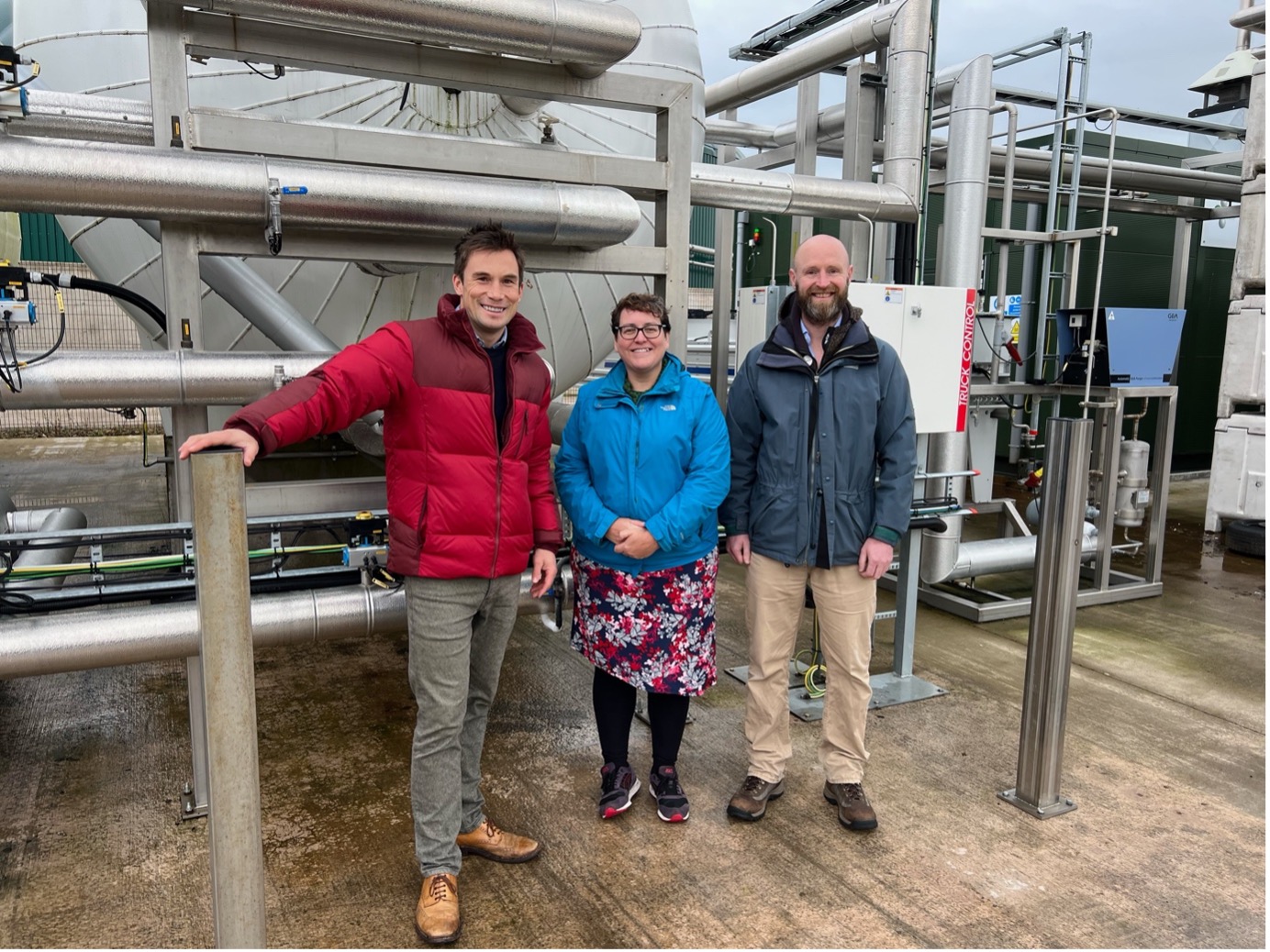Rebecca Bell, SCCS Policy & Research Officer, and Richard L Stevenson, SCCS Data & Projects Officer, on their recent visit that revealed plans designed to help Scotland achieve net zero.
Carbon dioxide (CO₂) capture is often talked about as a technology of the future, but we had the chance to see it in action, in Scotland, last week.
Richard Nimmons, Director of Carbon Capture Scotland, based in Dumfries and Galloway, invited us for a visit to see their pioneering carbon capture on an anaerobic digestor, which turns waste from the surrounding farms into biogas. The CO2 that is given off as part of this process is then captured, cleaned up and turned into dry ice – a vital product for transporting food and pharmaceuticals, although perhaps better known for the grand entrances on TV shows such as The X Factor or Stars in Their Eyes, depending on your vintage.
The process is already a great example of carbon capture at a relatively small scale, but Carbon Capture Scotland’s ambitions are much greater: they have developed a modular system which can be used to capture CO2 from processes such as fermentation in the whisky industry. The CO2 emitted from anaerobic digestion and fermentation is highly concentrated – meaning it can be separated from other gases using liquefaction, and can be purified to food-or medical-grade in units about the size of a small shipping container.
And, since the CO2 is of biogenic origin, if it is sent to geological storage then it will contribute to the ‘negative emissions’ needed to meet our net zero ambitions. And this is Carbon Capture Scotland’s plan: they are already planning to install their carbon capture equipment on two distilleries in Scotland, Tullibardine and Invergordon, and are confident that more will follow. Looking to enable the transportation and permanent storage of that CO2, preferably in Scotland, they have ambitions to be removing up to 200,000t (net) from the atmosphere per year by 2030.
Image credit: Richard Nimmons , Carbon Capture Scotland


